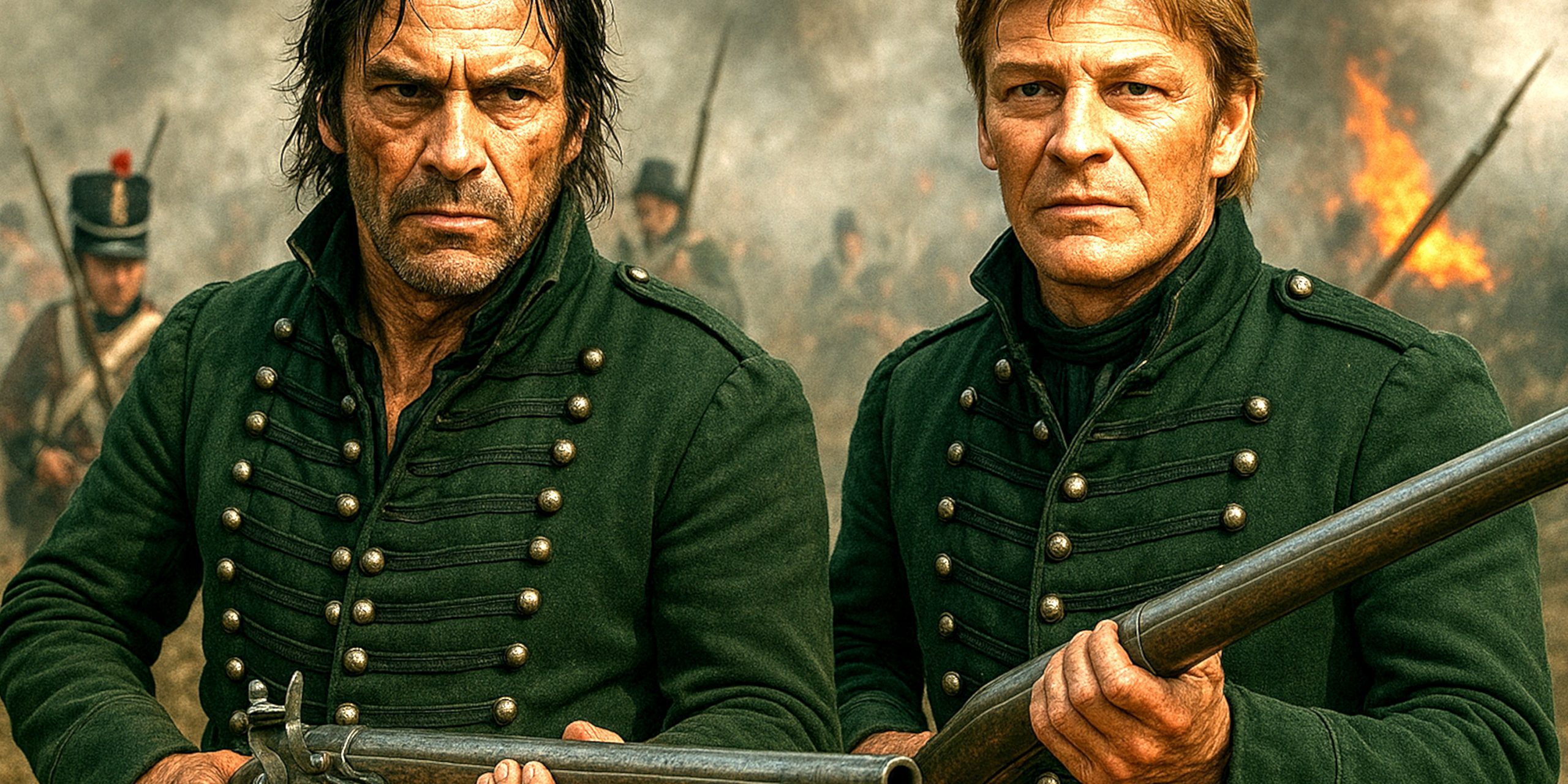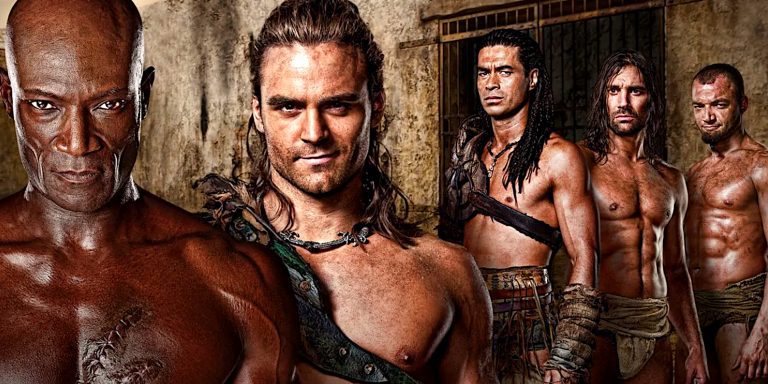
When you grow up reading Bernard Cornwell’s Sharpe novels, you get this vivid picture of a hard nosed, scarred up soldier who has been through more misfortune than a broken save file. Then you watch the ITV series and suddenly Sharpe is Sean Bean, which is not a bad trade, though it does shift your mental image quite a bit. The books and the show sit in the same world, but the journey changes along the way. Some changes make sense, some feel like the production team just had to roll with whatever horses and uniforms they could find that week.
Below is a clear look at what changed, what stayed close to the source, and where the TV version took its own path.
Character Differences
The Sharpe of the books is leaner, darker and more battered. Cornwell gives him a rough edge that never really washes off, not even with all those battlefield promotions. Book Sharpe carries deep scars, bad memories and a kind of moody stubbornness that feels very nineteenth century.
Sean Bean brings a different energy. He still plays Sharpe as a fighter with a chip on his shoulder, just with a bit more charm and a softer voice than you might expect from someone raised in the gutters of London. The series trims some of Sharpe’s nastier traits, making him more consistently heroic and more obviously likeable. You can almost tell they wanted viewers to root for him every Sunday evening, rather than worry he might nick their watch.
Even the supporting characters shift. Harper is still a powerhouse, though the TV version doubles down on his loyalty and humour. The books give him more bite, while the series gives him more warmth. Both work, just in different ways.
Plot Changes and Reordered Events
The TV show jumps around the timeline in a way that feels like someone shuffling cards in a hurry. The books follow Sharpe’s life in a mostly linear path, from India to the Peninsular War to Waterloo. The series adapts whatever story fits the budget and cast availability at the time, so some plots get combined, others get simplified and a few get placed in the wrong year entirely.
For a new viewer this is fine. For book readers it can feel like seeing an old friend wearing someone else’s coat. It is still Sharpe, just dressed in a few shortcuts made for television.
Some characters who die early in the books hang on for far longer in the show. Other characters vanish because there was no time or space in the shooting schedule. The tone of certain battles also shifts, since reenacting a full Napoleonic engagement on a 1990s ITV budget required creativity, a willingness to improvise, and probably a few prayers.
Tone and Grit
Cornwell writes with a kind of cheerful brutality. He never hides the dirt, blood, hunger or terror that runs through the ranks. The TV series captures parts of this, but never quite reaches the same level of grit. The reality is simple, the books can spend whole chapters describing how foul things smell, how hopeless the odds are and how close Sharpe is to losing every fight. Television has its limits, and both budget and time keep things a bit cleaner.
This does not make the show soft. It still has bayonet charges, mud everywhere and an impressive willingness to blow up barns. It just does not match the raw texture of the novels.
Romance and Relationships
The books give Sharpe a complicated love life that the show simplifies. Some relationships are merged, trimmed or removed entirely. Others are rewritten to create cleaner emotional arcs for television. This keeps the pacing quick, though it means the books feel richer and more messy in a very human way.
Villains and Drama
Cornwell writes some of the best villains in historical fiction, proper moustache twirlers who make you want to fling the book across the room. The TV show brings many of them to life, but often with less subtlety and more theatrical flair. This is part of the fun. You get villains who glare down the camera with the enthusiasm of someone who is clearly loving every minute on set.
Battles and Accuracy
The books have the freedom to go big. Cornwell can describe entire battalions, cavalry manoeuvres and the finer points of musket drill. The show manages far more than it had any right to on its budget, though the scale is inevitably smaller. A few hundred extras try to stand in for whole armies. Uniforms, kit and formations also drift away from historical precision now and then, but the heart of it stays in the right place.
Which Version Is Better?
This is the fun part. The books feel deeper, harsher and more detailed. The show feels warmer, punchier and far easier to binge. Cornwell’s world gives you the full Napoleonic grind, while the series gives you a Sharpe you can actually see and hear, played with a grim smile by a man who looks like he really would bayonet someone for stealing his boots.
If you love one, you will probably enjoy the other. They are different enough to stand apart, close enough that fans argue about it like it is a sport, and strong enough that both versions have stayed alive in the cultural bloodstream for decades.



